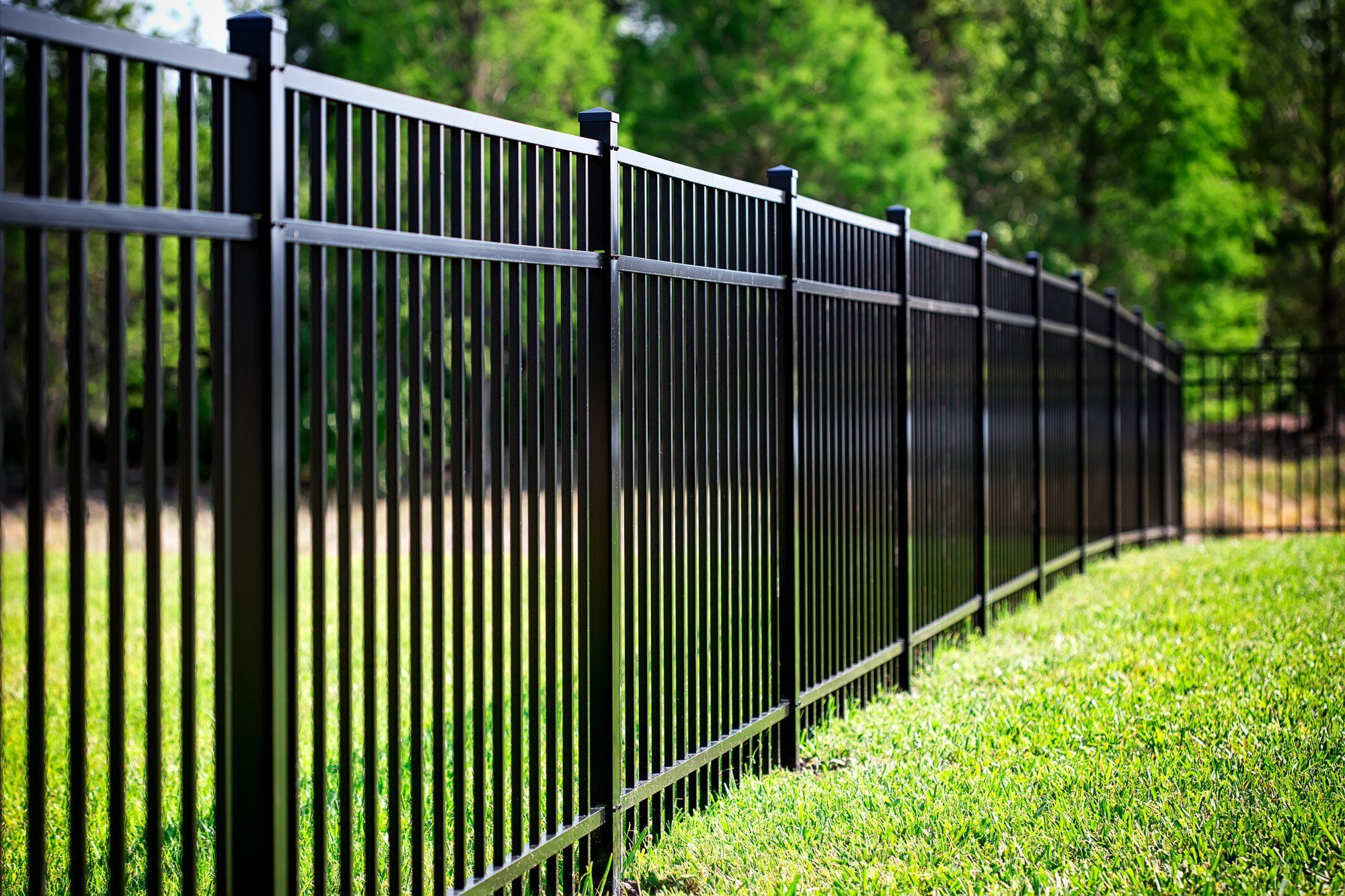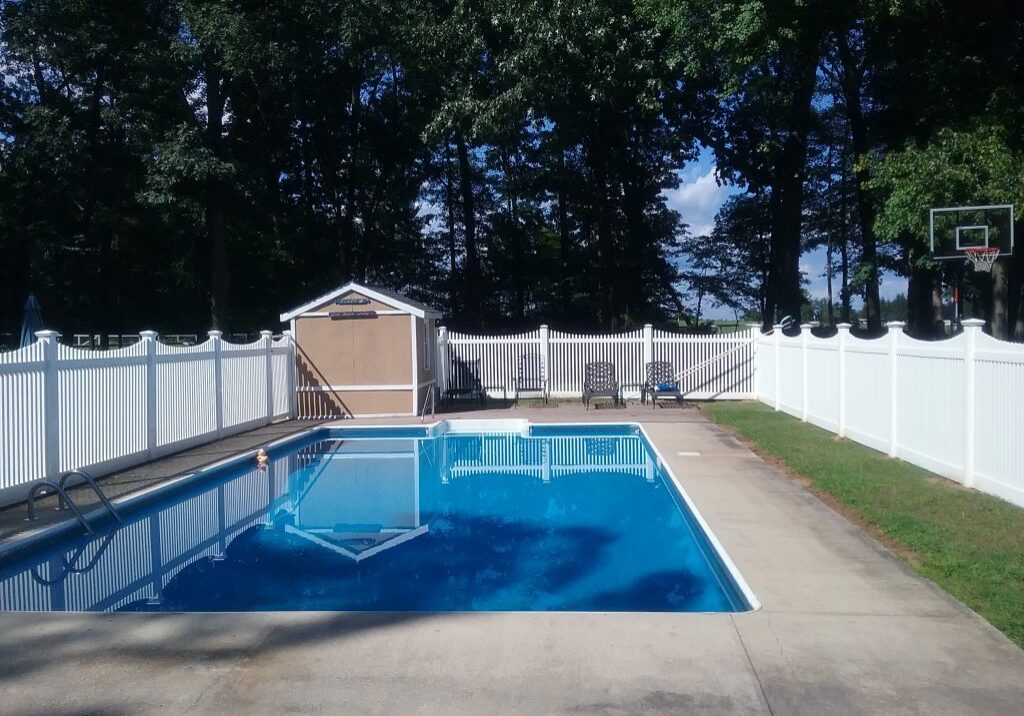All Categories
Featured
Your fencing is an investment that offers visual, personal privacy, and safety and security allure. To keep it in excellent form, regular upkeep tailored to its material is crucial. Each fencing type has one-of-a-kind maintenance requires based on its product's sturdiness, exposure to the elements, and other elements. Below's a comprehensive guide to preserving different secure fencing products.
![]()
Climate Security: Use a high-quality sealer or stain every 2-- 3 years to shield the timber from dampness and UV rays. For severe environments, yearly reapplication might be necessary. Cleansing: Utilize a yard tube or a pressure washer on a reduced setting to remove dirt and mildew. Adhere to up with a light detergent for stubborn stains. Repair services: Inspect for loose or deteriorating boards and change them quickly. Tighten up nails or screws to maintain the structure stable. Bug Control: Use termite-resistant wood or treat the fence with bug repellents to prevent infestations. 2. Vinyl Fencings. Vinyl fences are popular for their longevity and minimal maintenance needs.
Cleaning: Clean the surface with a garden hose pipe or a mix of soap and water to get rid of dirt and algae. For hard spots, use a vinyl-specific cleanser or a soft-bristle brush. Assessments: Routinely check for splits or warping, specifically after strong winds or hefty influences. Repair services: Change any kind of damaged sections instantly. Plastic fences usually utilize modular elements, making fixings simple. 3. Chain-Link Fences. Chain-link fences are economical and durable yet require routine attention to avoid rust.
Corrosion Elimination: Make use of a cable brush to get rid of rust from exposed areas, after that use a rust-inhibiting spray to protect the metal. Cleansing: Hose down the fence on a regular basis to get rid of dirt. For crud, usage soapy water and a stiff-bristle brush. Repair services: Tighten up any drooping sections or change harmed web links to preserve security. 4. Wrought Iron Fencings. Wrought iron fencings provide durability and beauty but are susceptible to corrosion otherwise appropriately maintained.
![]()
Rust Prevention: Scuff off corrosion places with sandpaper and apply a rust-resistant guide adhered to by exterior metal paint. Examine for corrosion a minimum of twice a year. Cleansing: Clean down with a fabric and soapy water to keep the coating. Prevent abrasive cleaners that can harm the surface area. Repainting: Repaint every couple of years to safeguard the steel from deterioration and keep it looking fresh. 5. Aluminum Fences. Aluminum fencings are lightweight, long lasting, and immune to rust, needing less upkeep compared to wrought iron.
Cleansing: Clean with soap and water to get rid of dust and dust. Wash thoroughly to avoid residue. Examinations: Examine for loose equipment or dents, particularly after storms. Secure or replace components as required. Touch-Ups: Apply paint to scraped or damaged locations to stop damages to the protective finish. 6. Composite Fences. Composite fencings are made from a mix of wood and plastic, combining toughness with marginal maintenance.
![]()
Cleaning: Make use of a pipe or a soft brush with soap and water to clean the surface area. Stay clear of utilizing extreme chemicals. Inspections: Try to find warping, especially in severe heat. Tighten or replace any broken panels. Build Prevention: While composite materials resist rot, maintain the fencing clean and dry to stay clear of mold accumulation. 7. Bamboo Fences. Bamboo is an environmentally friendly alternative however needs careful maintenance to keep its appearance and long life.
Securing: Use a protective sealant or varnish every 2-- 3 years to defend against wetness and UV damage. Cleaning: Tidy with mild soap and a soft sponge or brush. Prevent high-pressure washing, which can harm bamboo fibers. Repair work: Replace damaged poles or areas to maintain architectural honesty and appearance. General Upkeep Tips for All Fence Kind. Normal Inspections: Check your fence at the very least when every season for damages, wear, or loosened components. Trimming Plant Life: Keep creeping plants, plants, and bushes far from the fencing to avoid moisture damage and reduce insect task. Seasonal Modifications: In regions with snow, stay clear of piling snow against your fence to avoid structural anxiety. In warm environments, check for heat-related bending or fading. Conclusion. Each fencing product has its unique upkeep requirements, but a positive method to care can expand its life expectancy and maintain it looking its ideal. Wooden fencings require even more interest compared to vinyl or light weight aluminum, yet each product benefits from routine cleansing, inspections, and timely repair services. By tailoring your maintenance practices to the kind of fence you possess, you'll guarantee that it continues to give aesthetic, personal privacy, and safety and security charm for many years to come.

- Wooden Fences. Wood fences are valued for their natural look but require consistent maintenance to avoid damages.
Climate Security: Use a high-quality sealer or stain every 2-- 3 years to shield the timber from dampness and UV rays. For severe environments, yearly reapplication might be necessary. Cleansing: Utilize a yard tube or a pressure washer on a reduced setting to remove dirt and mildew. Adhere to up with a light detergent for stubborn stains. Repair services: Inspect for loose or deteriorating boards and change them quickly. Tighten up nails or screws to maintain the structure stable. Bug Control: Use termite-resistant wood or treat the fence with bug repellents to prevent infestations. 2. Vinyl Fencings. Vinyl fences are popular for their longevity and minimal maintenance needs.
Cleaning: Clean the surface with a garden hose pipe or a mix of soap and water to get rid of dirt and algae. For hard spots, use a vinyl-specific cleanser or a soft-bristle brush. Assessments: Routinely check for splits or warping, specifically after strong winds or hefty influences. Repair services: Change any kind of damaged sections instantly. Plastic fences usually utilize modular elements, making fixings simple. 3. Chain-Link Fences. Chain-link fences are economical and durable yet require routine attention to avoid rust.
Corrosion Elimination: Make use of a cable brush to get rid of rust from exposed areas, after that use a rust-inhibiting spray to protect the metal. Cleansing: Hose down the fence on a regular basis to get rid of dirt. For crud, usage soapy water and a stiff-bristle brush. Repair services: Tighten up any drooping sections or change harmed web links to preserve security. 4. Wrought Iron Fencings. Wrought iron fencings provide durability and beauty but are susceptible to corrosion otherwise appropriately maintained.

Rust Prevention: Scuff off corrosion places with sandpaper and apply a rust-resistant guide adhered to by exterior metal paint. Examine for corrosion a minimum of twice a year. Cleansing: Clean down with a fabric and soapy water to keep the coating. Prevent abrasive cleaners that can harm the surface area. Repainting: Repaint every couple of years to safeguard the steel from deterioration and keep it looking fresh. 5. Aluminum Fences. Aluminum fencings are lightweight, long lasting, and immune to rust, needing less upkeep compared to wrought iron.
Cleansing: Clean with soap and water to get rid of dust and dust. Wash thoroughly to avoid residue. Examinations: Examine for loose equipment or dents, particularly after storms. Secure or replace components as required. Touch-Ups: Apply paint to scraped or damaged locations to stop damages to the protective finish. 6. Composite Fences. Composite fencings are made from a mix of wood and plastic, combining toughness with marginal maintenance.

Cleaning: Make use of a pipe or a soft brush with soap and water to clean the surface area. Stay clear of utilizing extreme chemicals. Inspections: Try to find warping, especially in severe heat. Tighten or replace any broken panels. Build Prevention: While composite materials resist rot, maintain the fencing clean and dry to stay clear of mold accumulation. 7. Bamboo Fences. Bamboo is an environmentally friendly alternative however needs careful maintenance to keep its appearance and long life.
Securing: Use a protective sealant or varnish every 2-- 3 years to defend against wetness and UV damage. Cleaning: Tidy with mild soap and a soft sponge or brush. Prevent high-pressure washing, which can harm bamboo fibers. Repair work: Replace damaged poles or areas to maintain architectural honesty and appearance. General Upkeep Tips for All Fence Kind. Normal Inspections: Check your fence at the very least when every season for damages, wear, or loosened components. Trimming Plant Life: Keep creeping plants, plants, and bushes far from the fencing to avoid moisture damage and reduce insect task. Seasonal Modifications: In regions with snow, stay clear of piling snow against your fence to avoid structural anxiety. In warm environments, check for heat-related bending or fading. Conclusion. Each fencing product has its unique upkeep requirements, but a positive method to care can expand its life expectancy and maintain it looking its ideal. Wooden fencings require even more interest compared to vinyl or light weight aluminum, yet each product benefits from routine cleansing, inspections, and timely repair services. By tailoring your maintenance practices to the kind of fence you possess, you'll guarantee that it continues to give aesthetic, personal privacy, and safety and security charm for many years to come.
Latest Posts
Discover Cut Costs on Car Maintenance with Montclare Auto Repair’s Special Deals
Published May 25, 25
1 min read
Uncover Outstanding Car Repair Services from Montclare Auto Repair – Quality Service Today
Published May 24, 25
1 min read
Explore WyHy Federal Credit Union – Key Solutions for Your Money Goals
Published May 23, 25
1 min read
More
Latest Posts
Discover Cut Costs on Car Maintenance with Montclare Auto Repair’s Special Deals
Published May 25, 25
1 min read
Uncover Outstanding Car Repair Services from Montclare Auto Repair – Quality Service Today
Published May 24, 25
1 min read
Explore WyHy Federal Credit Union – Key Solutions for Your Money Goals
Published May 23, 25
1 min read